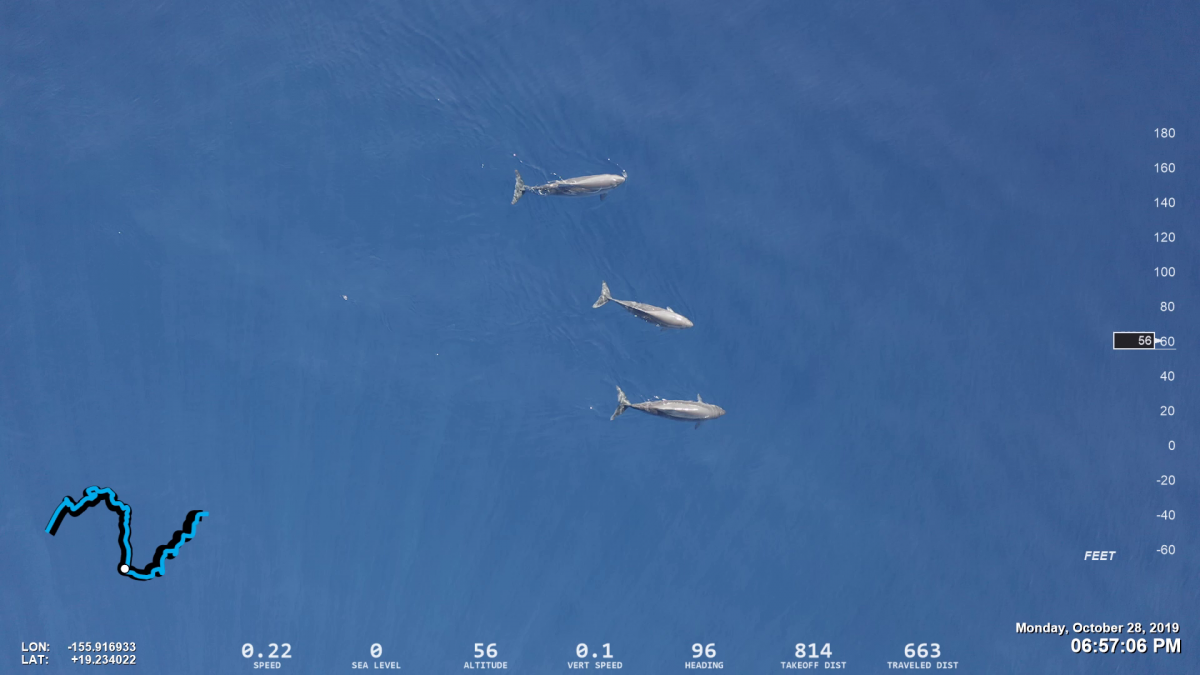We’ve been using drones (Unmanned Aerial Systems, or UASs) in our work in Hawai‘i for the last two years and for longer off the U.S. west coast, for a variety of studies. Drones allow for obtaining aerial photos and video relatively inexpensively, including photos that can be used to measure individuals (i.e., aerial photogrammetry) and assess body condition.

The photo above shows three dwarf sperm whales, a species that is notoriously difficult to study – we have started using drones to study the near-surface behavior of this species. Another application of drones is using them as a vehicle to collect breath samples (e.g., for studies of the respiratory microbiome, see below).

In 2018 we began using drones to collect breath samples from short-finned pilot whales and false killer whales, and in 2019 we expanded that work to Cuvier’s beaked whales. Collected samples are being used to examine the respiratory microbiome and are being analyzed by Linda Rhodes at the Northwest Fisheries Science Center.

Collecting a breath sample from a Cuvier’s beaked whale.
During our 2018 November Project we encountered false killer whales and recorded footage of false killer whales attacking a mahi mahi. Note the cameo by the Oceanic Whitetip Shark!
References
Lerma, J.K., L. Rhodes, M.B. Hanson and R.W. Baird. 2019. Assessing Respiratory Microbiome of Small- and Medium-Sized Cetaceans Using Unmanned Aerial Systems: Breath Sampling Humpbacks is so 2016. Poster presented at the World Marine Mammal Conference, Barcelona, Spain, December 2019. Download poster PDF
